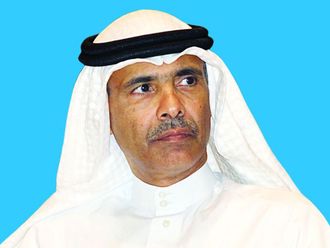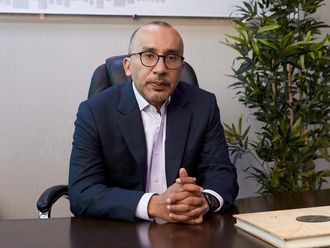
By many measures 2016 was a blockbuster year for debt markets in the Gulf region. Backed by solid credit fundamentals and compelling valuations, the size and frequency of debt issuance last year surpassed even the most optimistic of forecasts.
But the success should not be viewed as a one-time anomaly. Instead, in our view, recent developments have created a platform for potential further outperformance for the asset class in 2017.
The reasons are straight forward: a more stable oil price, coupled with further fiscal consolidation by GCC governments and continued easy global monetary policies are all potential contributors for credit to perform. It is worth remembering that a year ago there were serious concerns about slumping oil prices and the spillover impact on the region’s hydrocarbon dependent economies. This wall of worry has, for now, been removed.
ICE Brent crude oil futures have rallied to over $55.6 (Dh204) a barrel as of December 16, 2016 compared to a 2016 low of $26.21 in February. The recent push higher was sparked by an Organisation of Petroleum Exporting Countries (Opec) agreement, along with other major suppliers, to cut around 2 per cent from global production. This new pact increases the likelihood that a lingering oversupply in the oil market will be eliminated, providing a positive backdrop for oil prices, which should also feed into the credit story for much of the GCC.
While the bounce in oil prices has delivered a much-needed boost to investor sentiment, ongoing fiscal consolidation is another, arguably more important, element that should continue to stoke investor interest in regional fixed income in 2017. The scale of structural reforms currently underway has certainly impressed.
Lower oil prices have forced many GCC governments to consider ways of reducing their dependence on hydrocarbons, without completely sacrificing economic growth. These significant transformations are a multi-year process, and we remain confident that the GCC will succeed in placing itself on a more sustainable economic footing over the next few years.
In terms of reform progress, the results are already starting to show. Our research suggests that the 2016 combined deficit of approximately $135 billion could be lower by as much 45 per cent, to $75 billion, for 2017. In Oman and Bahrain, energy and water subsidies have been cut, fuel prices raised by 50-60 per cent and government spending scaled back. In Saudi Arabia, reform implementation has been even more dramatic.
After raising fuel prices by 50 per cent in December 2015, the Saudi Council for Economic and Development Affairs cancelled projects worth $267 billion in October. The government introduced cuts to government payrolls, by far the most significant recurring spending item. Adjusting for these decreases, the EIU estimated the budget deficit between 2017 and 2021 to amount to $261 billion, averaging 6 per cent of GDP during the period, from over 11.5 per cent in 2016.
Much of Saudi’s recovery relies on the success of the country’s ambitious “Vision 2030” plan, a blueprint for modernising the economy that focuses on cutting dependence on oil, lowering government subsidies, and stimulating the private sector. Saudi’s transition promises to be a long journey, but an extremely valuable one in the eyes of investors.
Another supportive factor for GCC debt in 2017 is the likelihood that accommodative monetary policies around the world will remain in place. While a 25-basis point rate hike by the US Federal Reserve in December has caused some anxiety in regional debt markets, we remain of the view that US monetary policy will remain accommodative, perhaps more than the market currently projects.
This bodes well for investor interest in comparatively higher yielding GCC fixed income products.
Throughout 2016, the performance gap between bonds and equities was stark: in the year to December 16, the Citi MENA Broad Bond Index returned 3.8 per cent while over the same period, the Bloomberg GCC 200 Stock Index added 3.4 per cent in value. Similar returns at the end of the year however mask the difference in volatility (and stress) throughout the year.
Equity markets traded in a range greater than 20 per cent, almost triple the range of an eventful year for regional bonds. In our view this trend may continue and serves to highlight how a diversified investment portfolio can help weather equity market volatility.
For many fixed income investors, 2016 will be remembered as the year that Saudi Arabia sold its first sovereign bond, a mega $17.5 billion issue that ranked as the largest in emerging market history. This landmark event followed Qatar’s $9 billion debt sale, Abu Dhabi’s $5 billion debt offering, and Oman’s debut $2.5 billion sale of five-year and 10-year bonds.
With the prospect of Kuwait coming to market in the first half of 2017, there is a strong chance that all six GCC sovereigns will, for the first time, have bonds outstanding. In our opinion, there is also a possibility that Saudi will launch its first sovereign Sukuk issue in 2017, a significant milestone for the Kingdom, the region, and asset class.
Beyond sovereigns, 2017 could also see a number of Saudi banks tapping debt markets, issues that are likely to be well received by investors.
While the outlook for GCC debt is an encouraging one, there are still a number of potential speed bumps that could curb activity. Should crude oil prices head dramatically south again, this may damage investor confidence and oil exporters’debt markets.
Investors will also need to keep a close eye on the interest rate path that the US Fed adopts in 2017. Emerging market assets could suffer indiscriminately should the Fed raise interest rates more aggressively than what the market currently anticipates — 3 rate hikes to a 1.5 per cent federal funds rate.
These concerns aside, valuations across GCC fixed income remain compelling. While spreads have tightened since the highs seen in February, they haven’t contracted as much as other credit markets.
This reinforces our constructive view on GCC debt from a relative value perspective and offers a real opportunity for GCC debt markets to perform strongly in 2017.
The writer is Chief Investment Officer of Global Sukuk and MENA fixed income at Franklin Templeton Investments (ME) Ltd.












